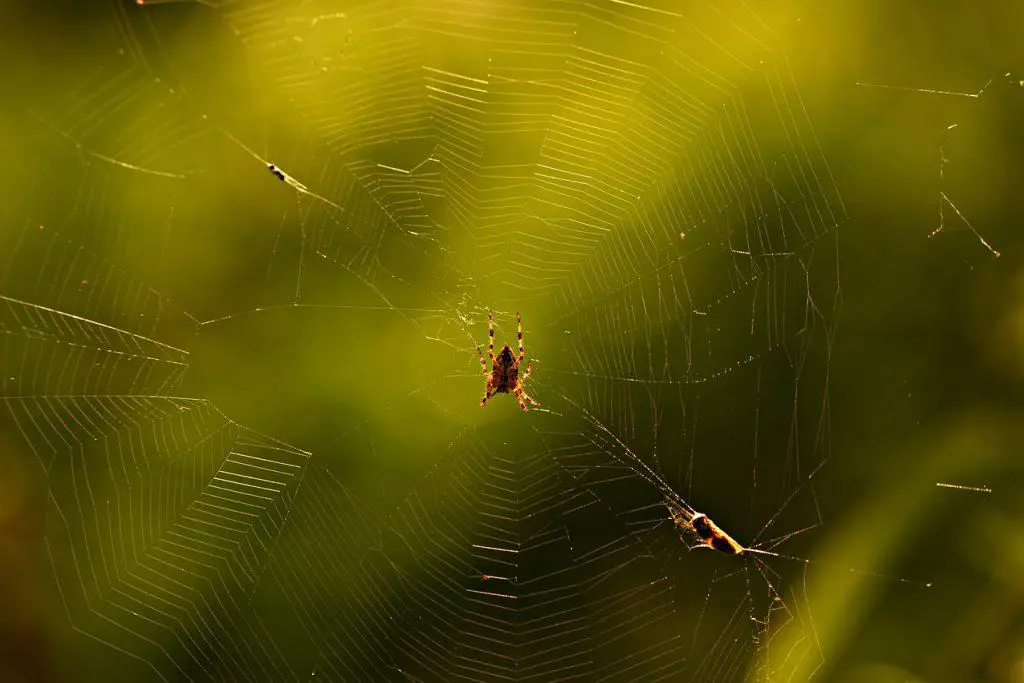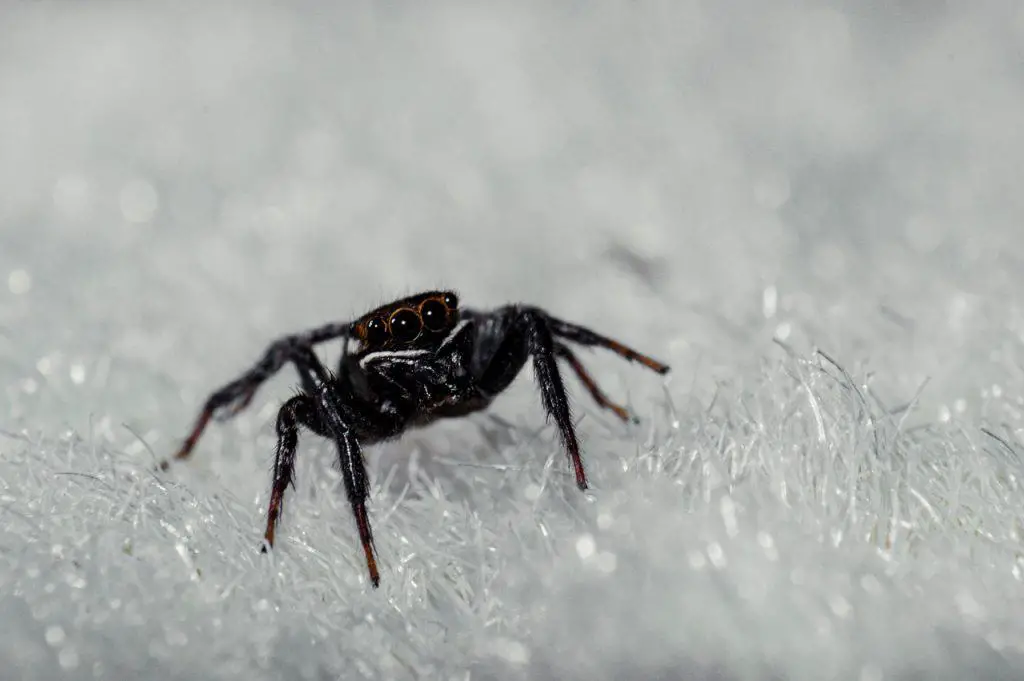Flying spiders include a large number of spider species that can move through the air, almost like they are taking flight. However, these arachnids don’t fly in the traditional sense because they lack wings. Instead, they take advantage of what they have (silk strands) to ride the wind like a tiny hand glider.
Let’s explore what flying spiders are, some interesting facts, and your burning questions about this phenomenon.
Key points
- Flying spiders use ‘ballooning’ to fly through the air.
- Although the thought of flying spiders terrifies me, these arachnids aren’t a threat to humans.
What are Flying Spiders?

Flying spiders, otherwise known as “ballooning spiders,” are a unique type of arachnid. Despite their name, they don’t actually fly like birds or insects. Instead, they employ a technique called ballooning to travel through the air. Using silk threads released from their bodies, they catch the wind and float to new locations, sometimes covering vast distances.
Physically, ballooning spiders resemble typical spiders, with eight legs and a body divided into cephalothorax and abdomen. They come in various sizes and colors, ranging from tiny species like the spiderlings of the “Money Spider” family to larger ones. However, their ability to balloon sets them apart from their ground-dwelling counterparts.
Where Can You Find Flying Spiders?
In terms of habitat preferences, flying spiders can be found worldwide, inhabiting diverse environments ranging from forests and meadows to urban areas. They are highly adaptable and can exploit even the most challenging ecosystems. This adaptability contributes to their success in the dispersal and colonization of new territories.
How do Flying Spiders Fly?
Flying spiders, also known as ballooning spiders, employ a unique method to travel through the air. Unlike birds or insects, they don’t possess wings. Instead, they rely on a technique called “ballooning” to take flight. To initiate this process, the spider climbs to an elevated point, raises its abdomen, and releases a silk thread. This thread catches the wind, allowing the spider to be carried along with it.
10 Fun Facts About Flying Spiders
Want to learn more about these arachnids? Check out these interesting facts about these unique spiders.
- Flying spiders encompass many different species: Ballooning spiders, also known as ballooning spiders, use a unique technique to travel through the air.
- Flying spiders don’t have wings: Despite their name, ballooning spiders don’t actually fly like birds or insects. They don’t possess wings but rely on a process called ballooning for flight.
- Wind and the electric field take them far: Flying spiders use both wind and the electrical currents of the Earth to get around.
- Ballooning spiders rely on silk: To initiate ballooning, a spider climbs to an elevated point and releases a silk thread. This silk thread catches the wind, allowing the spider to be carried along with it.
- The technique can take them around the world: Flying spiders can travel remarkable distances by utilizing this method. Some have even made the journey over an entire ocean. They have the ability to disperse and colonize new territories through ballooning.
- Ballooning spiders come in many shapes and sizes: They come in various sizes and colors, ranging from small spiderlings to larger species. Their physical appearance is similar to other spiders, with eight legs and a divided body.
- Flying spiders are found worldwide: These arachnids exhibit remarkable adaptability, thriving in diverse habitats worldwide. They can be found in forests, meadows, grasslands, and even urban areas.
- Ballooning spiders have an explorer’s spirit: These arachnids are opportunistic and take advantage of wind conditions for travel. Ballooning spiders contribute to the natural dispersal of species and ecosystem dynamics.
- They live for less than two years: Most ballooning spiders live for around 1.5 years.
- Ballooning spiders can change sex: Some types of ballooning spiders can change from a male to a biological female. It’s possible spiders choose to do this to make reproduction more possible.
What to do if You See a Flying Spider

Enjoy the moment! Ballooning spiders don’t pose a real threat to humans. While most of us are naturally afraid of arachnids, it’s likely that any spider you spot flying through the sky won’t want to interact with you. Instead, the spider likely wants to continue its journey. After all, humans pose a much larger threat to a spider than a spider does to us.
Where to Spot a Flying Spider
While thousands of ballooning spiders might be crawling the planet, witnessing one in flight is easier said than done. If you want to spot a flying spider in mid-air, the process will require a fair bit of sheer luck. You’ll really need to be in the right place at the right time to see a spider careening through the sky.
But you can increase your chances of seeing this type of animal by heading to its habitat. When seeking to witness these arachnids in action, explore natural areas such as forests, meadows, and grasslands. These environments offer suitable conditions for their presence. Look for elevated points where spiders can climb and release their silk threads to catch the wind. These launch points, along with open spaces, provide opportunities for the spiders to take flight and engage in ballooning.
Don’t rule out spotting this type of spider on your home turf. Surprisingly, even urban environments can be home to these unique spiders. Parks, gardens, and green spaces within cities may host these arachnids. Keep an eye out for them in metropolitan areas with a significant amount of greenery.
Flying Spiders: Frequently Asked Questions
You have questions about ballooning spiders. I have answers.
Are flying spiders venomous?
Many species of flying spiders, but not all, are venomous. The venom held in a ballooning spider bite isn’t fatal to humans. Typically, these animals won’t bite humans unless they feel threatened.
Are there flying spiders in the US?
Yes, flying spiders live in the US. But ballooning spiders are also found in other parts of the world.
Do flying spiders have wings?
No. Ballooning spiders don’t have wings. Instead, they use their silk threads to catch the wind.
Are flying spiders dangerous?
No. Ballooning spiders are generally not considered dangerous. While these spiders are venomous, a bite from this type of spider shouldn’t hurt you.
Final Take
Flying arachnids are undoubtedly a very interesting collection of creatures. Of course, you might not want to see a storm of ballooning spiders raining down from outside. But it’s a fun thought to consider that a flying spider might be bravely making it’s way across the Atlantic Ocean as you read this!
